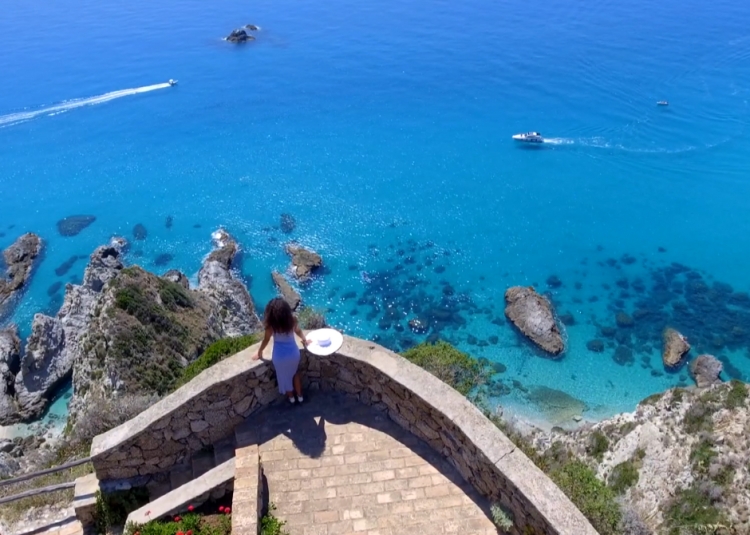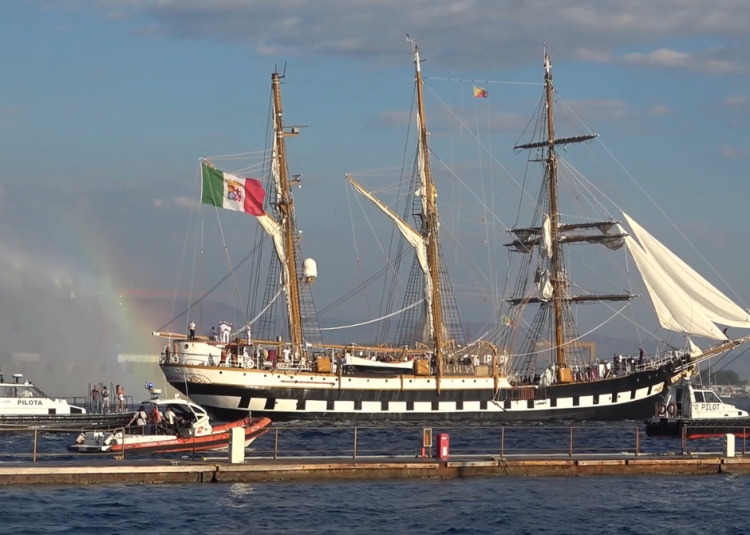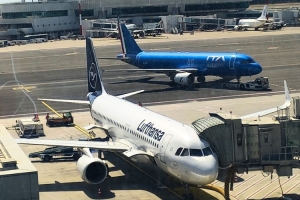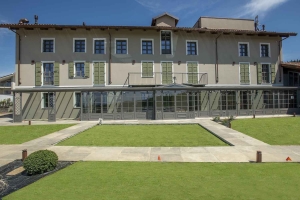Well, what’s happening, in my opinion, is that things are happening now that should happen later. But let's take it a step at a time. Right now Lufthansa has a minority stake in ITA, but it is leading the way, from the appointment of the managing director to the many other applications that expose ITA Airways' weakness. Like the move from the SkyTeam maxi alliance to the Star Alliance which belongs to Lufthansa.
Now, I wonder, does the Treasury, which still holds the majority share, not notice these anomalies. Sure, in a couple of years Lufthansa will be the majority shareholder, but in a couple of years. Or maybe next year. But not now.
A procedure that is rarely seen when two companies interact. The one who holds the majority wields the power, and the minority does not have a leading role. Here things have gone exactly the opposite way. Is it possible that no one has noticed?
 Giuseppe Aloe
Giuseppe Aloe
Editor in Chief
Tuscany is heading for a historical record in 2024, surpassing the 52 million overnight stays of 2019.
North Americans increasingly choose Tuscany
Last year the region came close to matching the numbers registered in that pre-pandemic boom year, although the Report on tourism in Tuscany presented by IRPET in Florence shows that the last five years did not always excel due to Covid, wars and changes in travel patterns. The numbers for 2023 - which is the first “normal” post-pandemic year - show a 3.5% increase in foreign tourist overnights compared to 2019. But to the +9% of Europeans we find a -6.2% of non-EU visitors. The reason being that while North Americans increasingly choose Tuscany, the Russian market has disappeared and the East Asian market has shrunk.
The market is susceptible to fashions and shifts in behaviour
Moreover, while the first five months of 2024 recorded a +3.1% increase over the previous year, we are now witnessing extreme recent trends: with overnights by North Americans at +7.4% compared to 2023 and +20.2% compared to 2019, and with Europeans skyrocketing to +10.4% and +31.5%. But without East Asia (a drop of 63% of Chinese visitors compared to five years ago) there is a major reduction in the areas of origin, making the market more susceptible to fashions and shifts in behaviour.
Domestic demand has slowed down
Another far from comforting phenomenon that has emerged over the last two years is the contraction of the domestic market. Compared to last year, due to the “increase in the cost of living and inflation,” the number of Italians from other regions has fallen by 8.9% and those from Tuscany by 12.8%. IRPET refers to mixed results: “the recovery is there, driven by the further internationalization of the Tuscan tourism system, but it is sluggish due to the slowing down of internal demand and to greater exposure to competition from new destinations as well as to global macroeconomic and geopolitical dynamics.”
The art cities still lag behind the pre-Covid years
As for destinations, last year Florence was still 18.3% down on 2019 (in this case due to the decline of large Asian groups,) while Livorno (+36.7%, thanks to new cruises), and the Amiata (+33.1%) and Valdichiana Aretina areas (+30.1%) marked their highest spike in four years. And the Lunigiana, in the first months of 2024, set a new record for growth over the pre-pandemic years with +120%. Between 2023 and 2024 there was growth in seaside areas (+3.1%) and in the mountains (+1.9%,), while hill country tourism dropped by 2.2%. The great art cities are still lagging behind the pre-Covid years - partly because they started their comeback later – but nevertheless they are showing a +5.2% increase.
The concept of overtourism has not been thoroughly considered in Italian and western tourism. Of course, European destinations are the most visited both for their historical appeal and for the grandeur of what they have to offer, from food and wine to the mountains to the sea.
The real issue is that mass tourism inevitably harms the regions and places it invades. So there ought to be a brake to prevent this siege. But what brake can there be if Europe spends billions of euros promoting tourism?
If you spend millions of euros on destinations, it is natural that you expect a massive response from that investment. It consistently arrives, and eventually we come back to the problem of overtourism. Until strategies evolve we will have to contend with this phenomenon. And it’s not going to be easy.
 Giuseppe Aloe
Giuseppe Aloe
Editor in Chief
Following first edition in 2023, Andar per Ville & Castelli fra Natura e Cultura del FVG (Andar per Ville & Castles discovering the Nature and Culture of FVG) makes a welcome return.
On weekends between the end of July and September
Promoted by AICS, the Italian Association for the Development of Tourist and Cultural Business Culture, the event will take place thanks to the contribution of the Friuli Venezia Giulia Region and the Friuli Hill Community in collaboration with Ecoturismo FVG and Alpe Adria Bike. The experiential mix is scheduled on weekends between the end of July and September, and it allows visitors to discover the region's historic houses and dwellings on foot or by bicycle led by cycling guides. There are morning and night routes suitable for everyone, exploring the biodiversity of the area and admiring the many evocative landscapes of Friuli.
“Slow tourism…with zero impact”
The owners of the properties will accompany the participants and, at the end of each tour, it will be possible to enjoy local foods and wines. A night tour is also planned, with an evocative moonlit walk and a visit to an ancient residence by candlelight. "Andar per Ville & Castelli fra Natura e Cultura aims at making known not only the beautiful historical residences in our region which are usually closed during the summer months, but also the natural and historical appeal of the Friuli hills ,– says Cristina Trinco d'Arcano, president of AICS and organizer of the event. -All this with a view to slow tourism, respectful of places and cultures, and with zero impact. The tours will move at a relaxed pace and the routes are easy and ring-shaped around the castles, allowing visitors to discover the landscapes, hills, waters and nature of our enchanting region.”
Castles, fortresses and villas waiting to be discovered
Ten itineraries and eight castles, fortresses and villas, are all waiting to be discovered. The events kicked off on 17 July, and in August and September they will be at Villa del Torso Paulone (Brazzacco, 3 August), Castello di Prampero (Magnano in Riviera, 4 August) Castello di Susans (Majano, 24 August), Casaforte il Bergum (Remanzacco, 25 August, bicycle tour), Castello d'Arcano (Rive d'Arcano, 31 August), Casaforte La Brunelde (Fagagna, Friday 6 September, night tour), Casaforte Il Bergum (Remanzacco, 14 September), Castello Savorgnan di Brazzà (Moruzzo, 15 September). During the tours, visitors can admire fortified villages, hospices, churches, towers, castles and natural sites of particular interest located in the 14 municipalities involved.
Despite the regulations and measures enacted across Europe and the United States, Airbnb's growth trajectory remains unabated, appearing to be an indomitable trend. At its core the platform capitalizes on the desire of property owners to maximize returns on their real estate. I purchase a property, pay taxes on it, and then transform it into a lucrative source of revenue, renting it out to students and newly-weds and so on. But wait a minute, I’ll make more money if I put it up for short rentals.
This is one of the most obvious products of the heinous capitalism that has gripped the West for so long. What’s happened to community engagement, mutual support, collective solidarity? Everyone is trying to exploit everyone else And Airbnb fits perfectly into this logic. I don't think the phenomenon can be mitigated. Norms are of no use if people cannot reverse the individualism that boils down to: it's fine with me, why should I care about others.
 Giuseppe Aloe
Giuseppe Aloe
Editor in Chief
Tuscany marks the 450th anniversary of the death and legacy of Cosimo I de' Medici
February 06, 2024This year Tuscany is marking the 450th anniversary of the death of Cosimo I de' Medici with many events, including an exhibition at Palazzo Strozzi Sacrati, seat of the presidency of the Region in Piazza Duomo in Florence. The exhibition will be inaugurated on 21 April 2024, in memory of the date that marked the death of the father of modern Tuscany on 21 April 1574.
Among the events there will also be 27 August, the day on which Cosimo was appointed Magnus Dux Etruriae in 1569 becoming, thanks to the papal bull issued by Pius V, Grand Duke of Tuscany. A third event, announced by the president of the Tuscan Region Eugenio Giani, is a concert in homage to Florence’s great musical culture during Cosimo’s reign.

Eugenio Giani has also announced a €200,000 tender for proposals from municipalities interested in the works of Cosimo I dei Medici, with the aim of promoting awareness of the Duke and his time. “I will be available to visit schools to talk about the local history that is lacking in many schools, and which we want to revive.”
'Tuscany is the only Italian region that has 450-year-old roots dating back to Cosimo, a statesman who made Tuscany a state, which is something no other region can boast. When Italy was formed Tuscany was the only region that had an identity stretching back over hundreds of years, thanks to Cosimo I de’ Medici.”
It is unclear why the Lufthansa-ITA agreement is taking so long. The European Commission is pushing for the carriers to relinquish some slots on North America. Why?They are very profitable routes, so why should Lufthansa and ITA Airways give them up?
The key question is who would benefit from the two carriers surrendering their coveted slots? And what pressure has the European Commission come under to point in this direction? In short, it is a complex issue, but we see no reason for a nascent European carrier to sacrifice interests that are currently obscure. It would be good to have a clearer understanding of the forces at play, especially as they impact millions of citizens. And, above all, to resist lobbying pressures that appear disconnected from the genuine interests of travellers.
 Giuseppe Aloe
Giuseppe Aloe
Editor in Chief
Despite recording excellent figures for June, concerns loom over tourism in Italy during July and August. While the number of foreign visitors is on the rise, particularly with the influx of travellers from the United States who are eager to explore and experience our country, there are two significant issues at hand.
Firstly, Italians who should have travelled en masse in their own country are not doing so. Despite seeking travel quotes, when they count the pennies in their pockets, they find they just don’t have enough money. The fact is that right now Italians are running out of travel reserves. The Covid pandemic impoverished the nation and, if we add the insane rise in prices, then the picture is complete.
Secondly, foreign travel also faces its share of challenges. If the affluent can still afford trips costing €60,000 and more, the majority have had to significantly shorten their holidays. What was once an average two-week vacation has now been cut down to one. Highlighting a phenomenon that is likely to persist unless Italy’s economic conditions improve.
 Giuseppe Aloe
Giuseppe Aloe
Editor in Chief
A record number of 41,000 passengers transitted at Trapani Birgi airport in June.
A 47% increase over the same month last year
This is the highest figure so far this year, and there were 1,040 flights. Airgest, the company that manages Trapani’s Birgi Airport, reports a 47% increase in passengers and an 18% increase in flight movements compared to June 2022. The total number of passengers in the first half of 2023 was 533,641, surpassing the corresponding period in 2022 by 47%. When compared to 2019, there has been a remarkable growth of 162%. The load factor for almost all destinations was high, with national destinations such as Bologna and Bergamo at 91%, Treviso at 89%, Pisa and the new Malpensa route at 88%, and international destinations like Baden-Baden at 93%, Riga at 92%, Katowice at 90%, and Frankfurt Hahn at 87%.
“The top-performing airport among those handling between 1 and 5 million passengers”
.“Step by step, month after month, we are shaping the future of our airport,” said Salvatore Ombra, president of Airgest. “Recently the Airports Council International, an association representing 575 airport operators from 179 countries, certified Trapani Birgi as the top-performing airport among those handling between 1 and 5 million passengers. We will mathematically reach the significant milestone of one million passengers by the end of the year. Our next objective is to become one of the most successful investments in the Sicilian Region.”
The Antica Dimora Doso, a wine resort in the heart of the Langhe, featuring seven rooms and suites has opened.
A restored farmhouse in the Barolo area
The newly opened Antica Dimora Dosio wine resort is in the Langhe region, the result of the restoration of a farmhouse connected to the wine cellar of the same name. The project was headed by Gianfranco Lanci, leader of a group of three wineries in the Langhe and Monferrato regions, who sadly passed away recently. The new establishment, which maintains and preserves the distinctive features of the original farmhouse, is located on the highest point of the Serradenari Hill, a prestigious area known for Barolo wine and with views of the Monviso mountain.
Five bedrooms and two suites, all with fireplaces
Spanning two floors, the wine resort has five bedrooms and two suites with panoramic vistas of the garden, the Alps, and the Langhe’s vineyards. Each room is themed around a natural element and boasts unique furnishings, accessories, and fabrics in harmonious shades, and they all have fireplaces.
.Outdoor seating and a heated winter garden
After exploring the region, guests can enjoy a refreshing swim or relax on sun loungers by the heated pool, taking in the scenic beauty of the rolling hills and the lush vineyards. At sunset they can unwind in the outdoor seating area, savoring an aperitif or a glass of wine and a platter of local specialties. During the harvest season, when the rows of vines turn shades of yellow, red, and orange, guests can also enjoy the heated winter garden.
Electric bicycles to visit vineyards and a UNESCO site
In addition to the accommodation, Antica Dimora Dosi offers a wide range of experiential activities to be enjoyed in both the Langa and Monferrato regions. These include renting electric bicycles to explore the La Morra area, embarking on vineyard treks with the option of a picnic among the rows of vines, or visiting the Underground Cathedrals, a UNESCO World Heritage Site at the Coppo di Canelli winery, which is part of the same group as the Antica Dimora Dosi.
Latest articles
Latest Video

Brescia, your next destination
Brescia, located between Milan and Venice, is easily accessi…
270
Brescia, your next destination
Brescia, located between Milan and Venice, is easily accessi…
270- Our Partners -


- Under the patronage of the Italian Tourist Board -














































